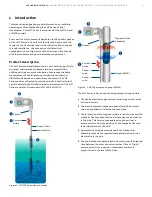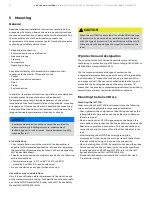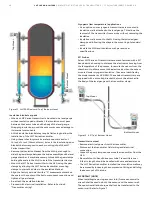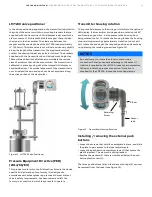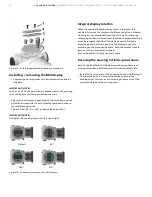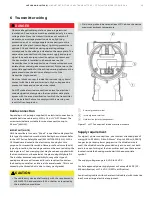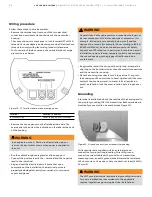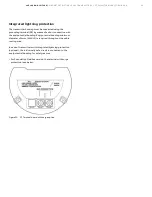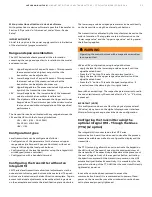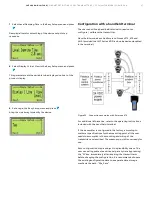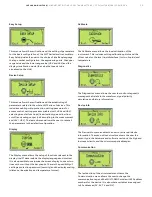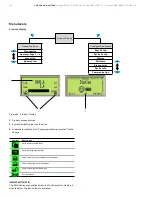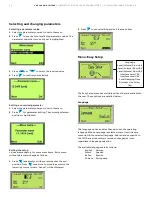
LMT10 0 A N D LMT 20 0 |
M AG N E TOS T R I C T I V E L E V EL T R A N SM I T T ER S | FF O I/L M T 10 0/ 2 0 0/FF - EN R E V. A
17
LMT200 valve positioner
In the valve positioning application, the transmitter is bolted to
the yoke of the actuator with two mounting brackets that are
supplied with the transmitter A third bracket is secured to the
stem connector This bracket holds the magnet that provides
the signal to the transmitter The clearance between the
magnet and the sensing tube of the LMT200 is approximately
1/4” (6 35mm) This dimension is not critical and can vary slightly
along the length of the transmitter The magnet should not
contact the sensing tube at any point in its travel The brackets
supplied with the transmitter do not include mounting holes
These will be drilled in the field to accommodate the various
sizes of actuators that will be encountered The transmitter is
calibrated in place by using either the integral HMI display or
handheld devices The vertical alignment of the transmitter is
not critical and the zero and span can be set anywhere along
the active portion of the transmitter
Figure 13 LMT200 Valve Positioner
Pressure Equipment Directive (PED)
(2014/68/EU)
This product conforms to the EU directives listed in the device-
specific EU declaration of conformity It is designed in
accordance with safe engineering practices to meet state of
the art safety requirements, has been tested and left the
factory in a condition in which they are safe to operate
Transmitter housing rotation
To improve field access to the wiring or visibility to the optional
HMI display, the transmitter housing can be rotated up to 360°
and fixed in any position A stop prevents the housing from
being rotated too far To rotate the housing, loosen the housing
stop retaining-screw by approximately 1 rotation (do not pull
out), rotate the housing to the required position and secure by
re-tightening the retaining-screw (see Figure 14)
NOTICE
Do not attempt to rotate the elbow to sensor tube
connection Rotation can cause damage to the sensor If
rotation is required on the LMT100, loosen the compression
fitting or rotate the process connection If rotation is
required for the LMT200, loosen the mounting clamps
Retaining
Screw
Elbow
Sensor
tube
Figure 14 Transmitter Housing Rotation
Installing / removing the external push
buttons
• Loosen the screws that hold the nameplate in place, and slide
the plate to gain access to the local adjustments
• Loosen the push button assembly screws (1) that secure the
plastic element The element is spring-loaded
• Remove the gaskets (3) that are positioned below the push-
button plastic cover (2)
The three push buttons (4) and the relevant springs (5) can now
be removed from their seat (see Figure 15)



